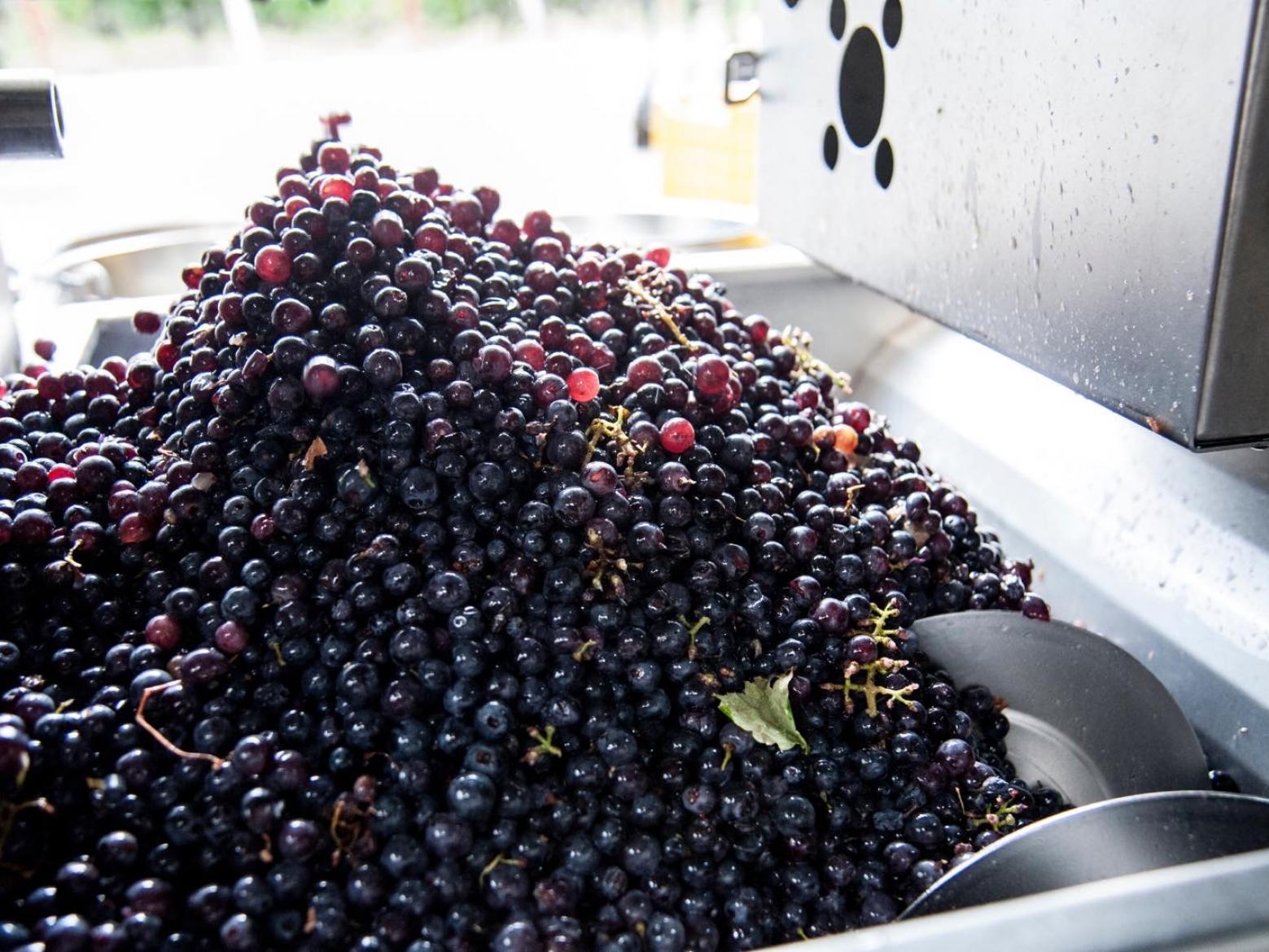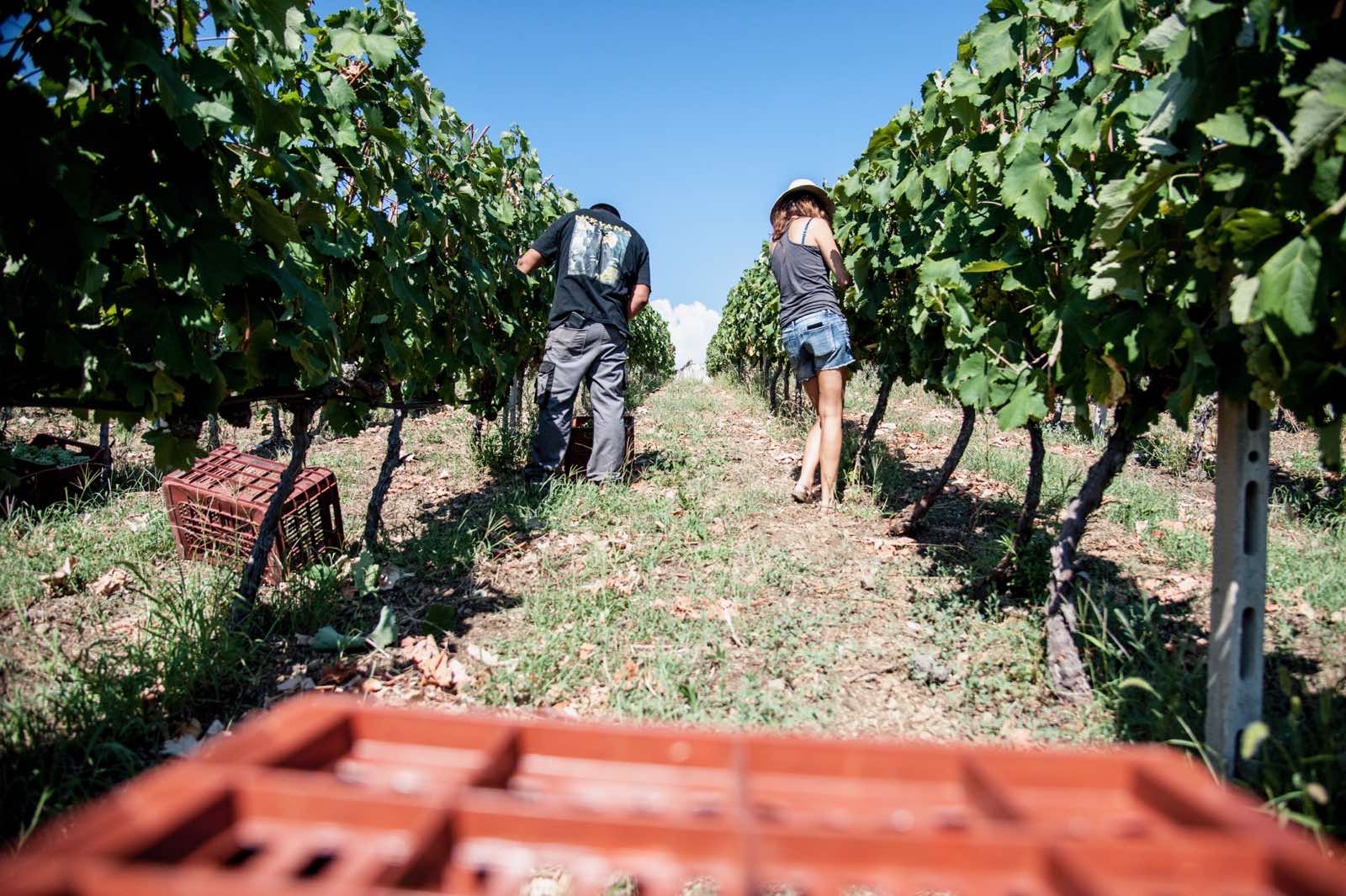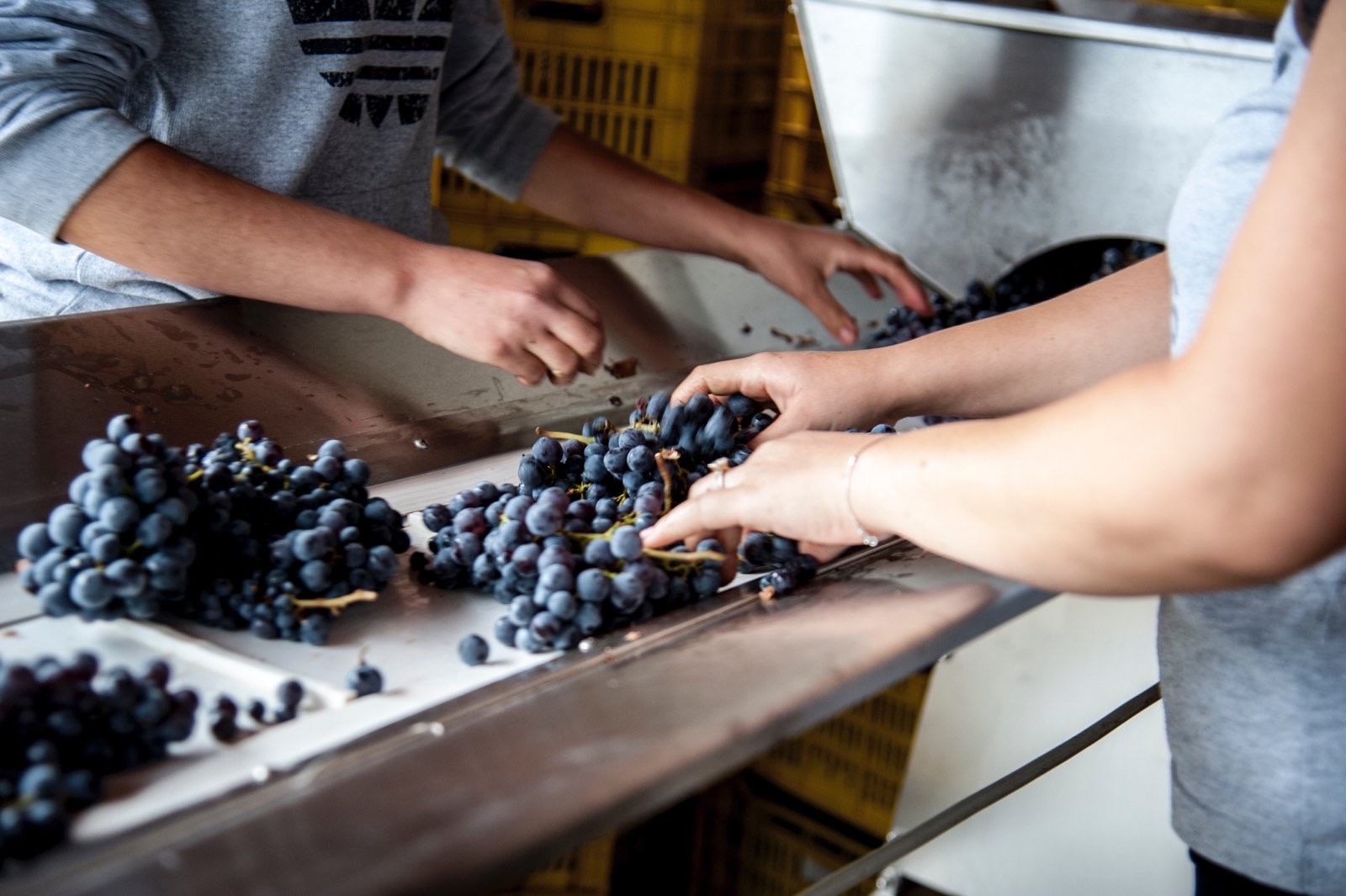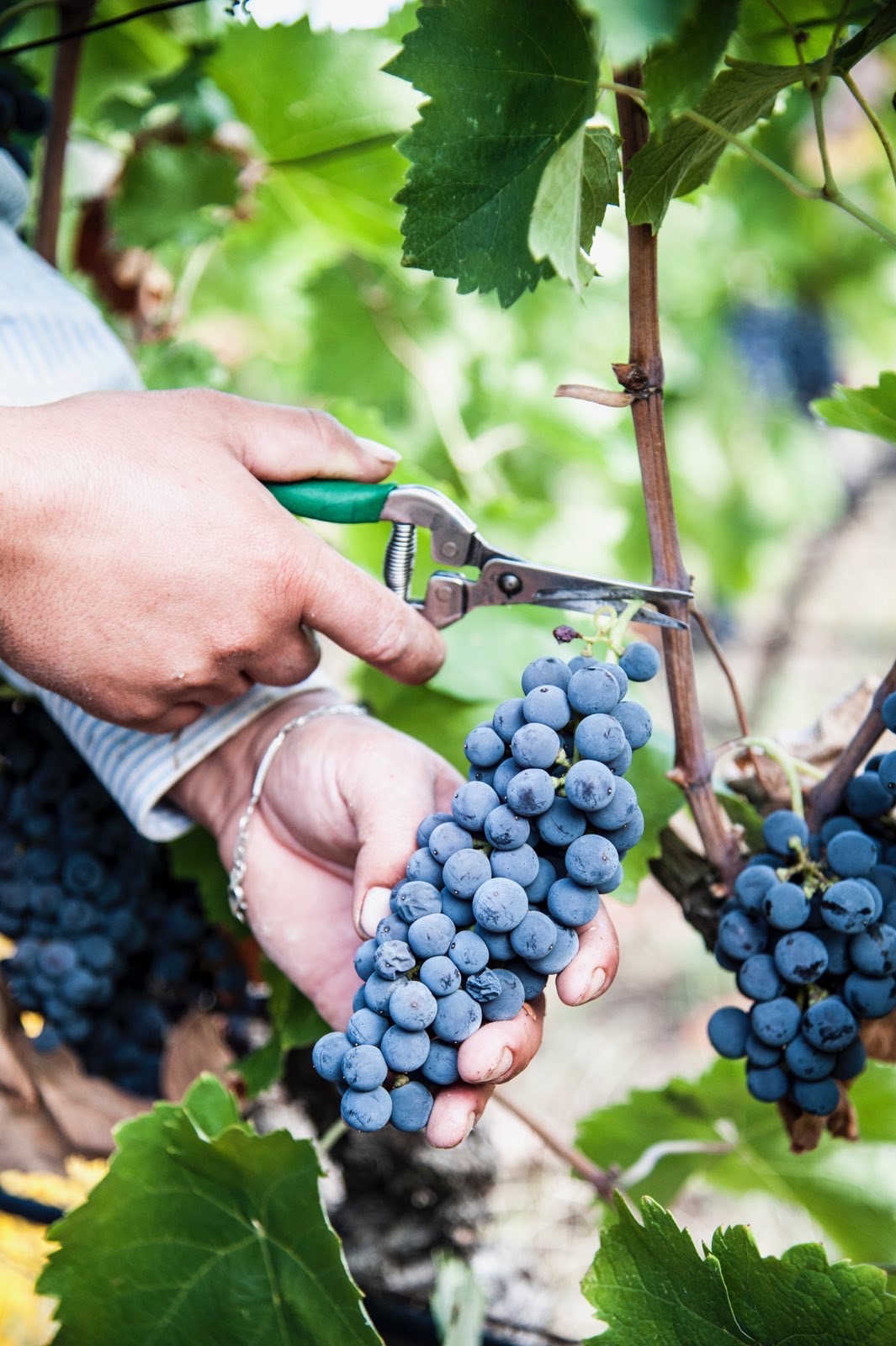Naoussa harvest 2020 through the eyes of the producers
With the harvest in Naoussa at its peak for most producers, I asked Stellios Boutaris from Ktima Kir-Yianni, George Diamantakos from Ktima Diamantakos, who sent us all of the photos, George Fountoulis from Vaeni, Apostolos Thymiopoulos from Thymiopoulos Vineyards, Kostis Dalamaras from Ktima Dalamara and Haroula Spinthiropoulou from Argatia Winery to give me an initial appraisal of the 2020 harvest.
Weather conditions
Stellios Boutaris: The vine-growing season for Naoussa began with a dry January and a February with minimal rains. The average temperatures were typical for the season. The two following months, March and April, included long intervals of intense rainfall, and the first week of April was marked by snowfall (two metres of snow in the closed ski centre Tria Pente Pigadia!), with temperatures which were relatively low for the season. This affected the plants by prolonging bud growth, which consequently extended the growing season by at least a week. For May and June, we had many showers of short duration and intensity. The period was characterised by warm days and relatively cold nights for the season. This created a long flowering period for all varieties, resulting in heterogeneity in the grapes during the harvest season. Finally, the summer was characterised by several rainfalls and a strong storm in early August. This was followed by a period of prolonged drought and increased temperatures for the season until the end of September, which was ideal for maturation. Even more importantly, in the last ten days of September, the evening temperatures dropped rapidly, which is the classic microclimate for Naoussa as we have always known it to be.
Quality - Quantity
George Diamantakos: We started harvesting quite late and we expect to have an excellent year. The concentration and amount of anthocyanins (phenolic substances responsible for the colour of dark grapes) are low, but the sugar concentration is very satisfactory. I feel that we are going into a year with unique characteristics where the aromatic profile of the wines will strongly reflect the variety. We will have to protect the fewer anthocyanins during vinification, and depending on the maturity of the tannins, we will know the ageing potential of the crop. Production is reduced by 30-35%, which may be the determining factor for the wine quality of this year.
Stellios Boutaris: Unfortunately, many growers were afraid of the rain of September 26th, and harvested their grapes relatively unripe. In our vineyard in Yiannakohori, for yet another year, the major part of the Xinomavro harvest will reach into October. Only mature bunches will be selected at harvest, so as to reduce unevenness and obtain the best possible result. If we needed a phrase to describe this year, it would be, inhomogeneity. The quantities were slightly reduced, and the quality is good. The final result, of course, will be seen when the wine is led to the barrels!
Kostis Dalamaras: Quantitatively, I think we are at normal levels since there were no disasters in previous years (mainly hail). In terms of quality, the rains that fell in August (120mm on average in various parts of the zone) initially indicated that they might have led to a deterioration of the grapes. But, since they fell relatively early in the month and the vintage had progressed, most of the vines were in the pruning rather than the ripening phase which, in combination with the prolonged sunshine of September, kept the quality at outstanding levels. Whilst this is being written, the harvest continues, and we expect the phenolic maturation to improve even more since the weather is very favourable.
Each year the wines improve, and this needs to be taken into account when we refer to the vintage of each crop. What I mean is, if for example 2011 had the same characteristics as 2019 in terms of weather conditions, in both cases we can characterise the year as very good. Nevertheless, we expect the wine of 2019 to be better as the winemakers’ methods have improved. This definitely applies to us, but I think it also applies to the region as a whole.
Haroula Spinthiropoulou: It is too early to make inferences about the quality of Xinomavro. Testing the fruit now has put a smile on our face. It seems that Xinomavro is now delivering delicious grapes, the bitterness in the grape skins has disappeared, the seeds have turned brown and they are very tasty. The sugars are there, the acidity is typical, and it seems as if we are approaching the desired phenolic wealth. We hope the weather will be on our side. If so, the slow and prolonged maturation will probably work its miracle.
George Foundoulis: Despite non-uniformity in maturation, the vintage is evolving smoothly, with both very satisfactory levels of quality (aromas, bodies and flavors) and quantity.
Apostolos Thymiopoulos: At the time that this is being written (late September), I have not harvested a single bunch of Xinomavro. The reason for this is that I have not yet decided how I will handle the raw material in a year with many peculiarities. In general, this year is a viticultural seminar for difficult varieties. The "greedy" viticulturists, who want high acreage yields and fertilise their vines every year, saw great vigour in the plants until mid-August, due to rainfall in the summer months, and then saw their production collapse from prolonged high temperatures and drought. This alternation shocked the plants, as a result of which they lost juice from the fruit and stopped smooth ripening. On the other hand, organic vineyards, together with those that follow biodynamic principles, not only ripened smoothly, but they seem to be giving excellent grapes with excellent phenolic ripening. Nevertheless, these vineyards are rather few in the whole zone.
For the Future of the zone
Stellios Boutaris: Unfortunately, the developments in the wine-growing region are not promising. Viticulture is going through a prolonged recession. The difficulties that large companies and cooperatives are having in absorbing large quantities have led winemakers to abandon their vineyards. Fortunately, Apostolos Thymiopoulos has done a fantastic job, especially with exports, and still absorbs relatively large quantities. But, the oxymoron is this. The small wineries are cultivating larger and larger areas to meet the demand in the "small" and oenologically advanced single vineyard "Naoussa". At this rate, we will end up with a model where only vertical integrated producers who bottle wine with their name will grow vines. Let us hope more viticulturists will change their way of cultivation, placing emphasis on quality rather than quantity and will work more closely with the local wineries, so that viticulture in our area is not lost.
George Diamantakos: The zone is undoubtedly in recovery, but simultaneously at a crucial point. The questions placed during the last decade concerning style, "can Xinomavro stand alone as a single variety", have been answered. We now have to discover the limits of the variety and establish Naoussa as the premium red wine production zone. All of the producers have placed their bets on the brand name and the variety, we have a shared vision, we are in constant exchange and discussion, and we have excellent relations with each other. In my opinion, during the years to come, working more meticulously in the vineyard will play the most crucial role in achieving another level. We no longer lack oenologists; we now need trained viticulturists to step into the vineyard. Of course, I would be happy to see new small family wineries spring up or even large investments attracted by the area.
Haroula Spinthiropoulou: Unfortunately, coronavirus has put a brake on the growth of exports and has reduced sales in the domestic market, especially for small estates, whereas the larger companies continue to sell, but mainly their cheaper products. A problem in the absorption of Xinomavro has arisen. This is a pity as the future of the zone, for the first time in several years, seemed promising. I hope we will return to normal soon. Of course, it appears that it will take many years of systematic cooperation and teamwork, in both the external and internal market, to be able to say that the zone has a future. At the moment, Vaeni's potential is limited, and the prominent winemakers are competing with it in terms of sales. At the same time, the small wineries are working mainly with the production from their vineyards; they do not buy in enough grapes to make a difference. On the other hand, we do not have investments from entrepreneurs who believe in the dynamics of the region. So things are not optimistic right now. If the market opens soon, and upon the condition of systematic collaboration, the zone will be maintained as it is in the next few years. Otherwise, we will see it shrink. Unfortunately, in essence, each winemaker is working alone, first for himself and less for Naoussa. If this is reversed, and we collectively start working towards establishing a Naoussa brand, things could change.
Apostolos Thymiopoulos: Naoussa seems to have stabilised at a remarkable level and is about to go forward. Our efforts were rewarded with the five-page tribute to Rapsani and Naoussa on Decanter, that travelled the variety to every corner of the globe; this was confirmed by the opening of new markets, the increase in sales, and fact that the more expensive labels are doing well. High-quality Xinomavros are now selling out and at excellent prices. My personal opinion is that from now on ageing potential will define the game. Wine shops and wine lovers expect to lay down their Xinomavro for some time and to be rewarded with the enjoyment they anticipate from it. We must stand up to this as much as possible.
International competition for wines has risen; the demands of both professionals and consumers have also grown, making them unwilling to forgive mistakes as they now have a huge selection to choose from. The wine-growing regions of Greece are not yet recognised designations of origin on global markets, with the exception of Santorini, which is aided by its tourism. Nevertheless, there is an increase in the fame of specific winemakers from the different regions, which is helping the image of their individual regions, but also that of the country as a whole.







